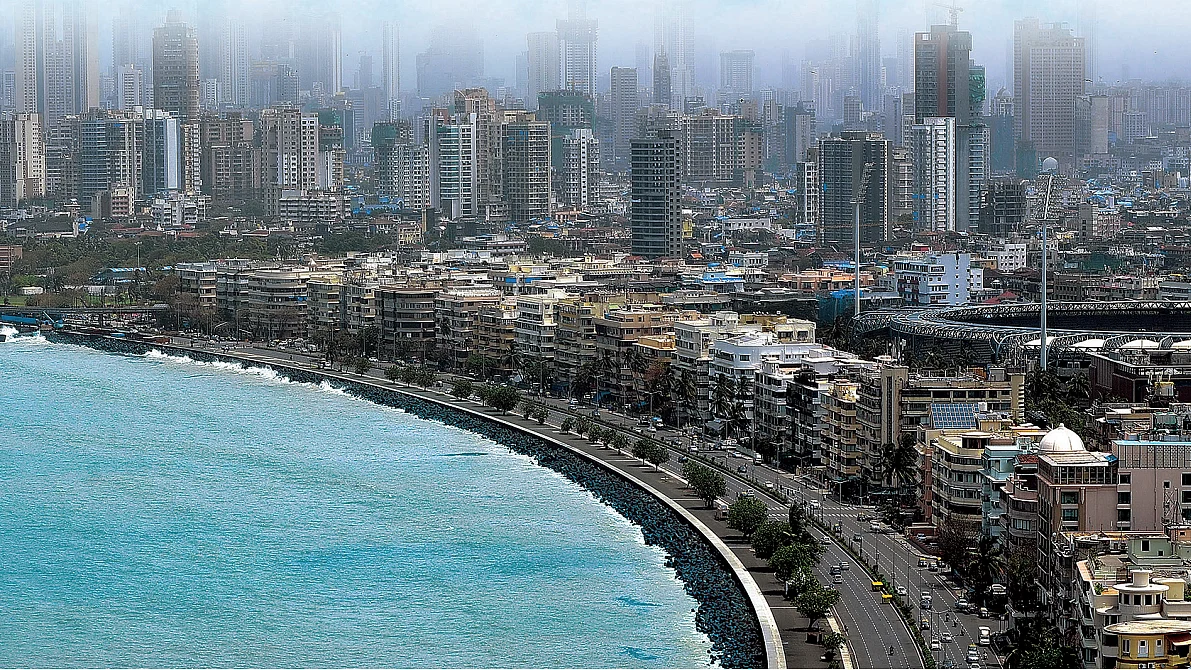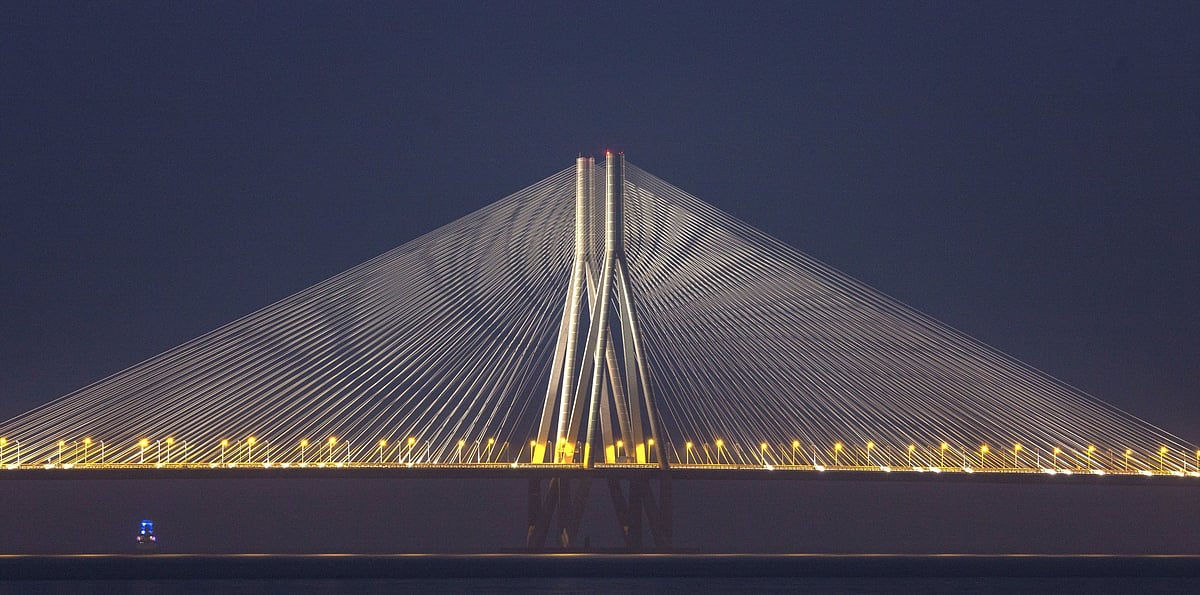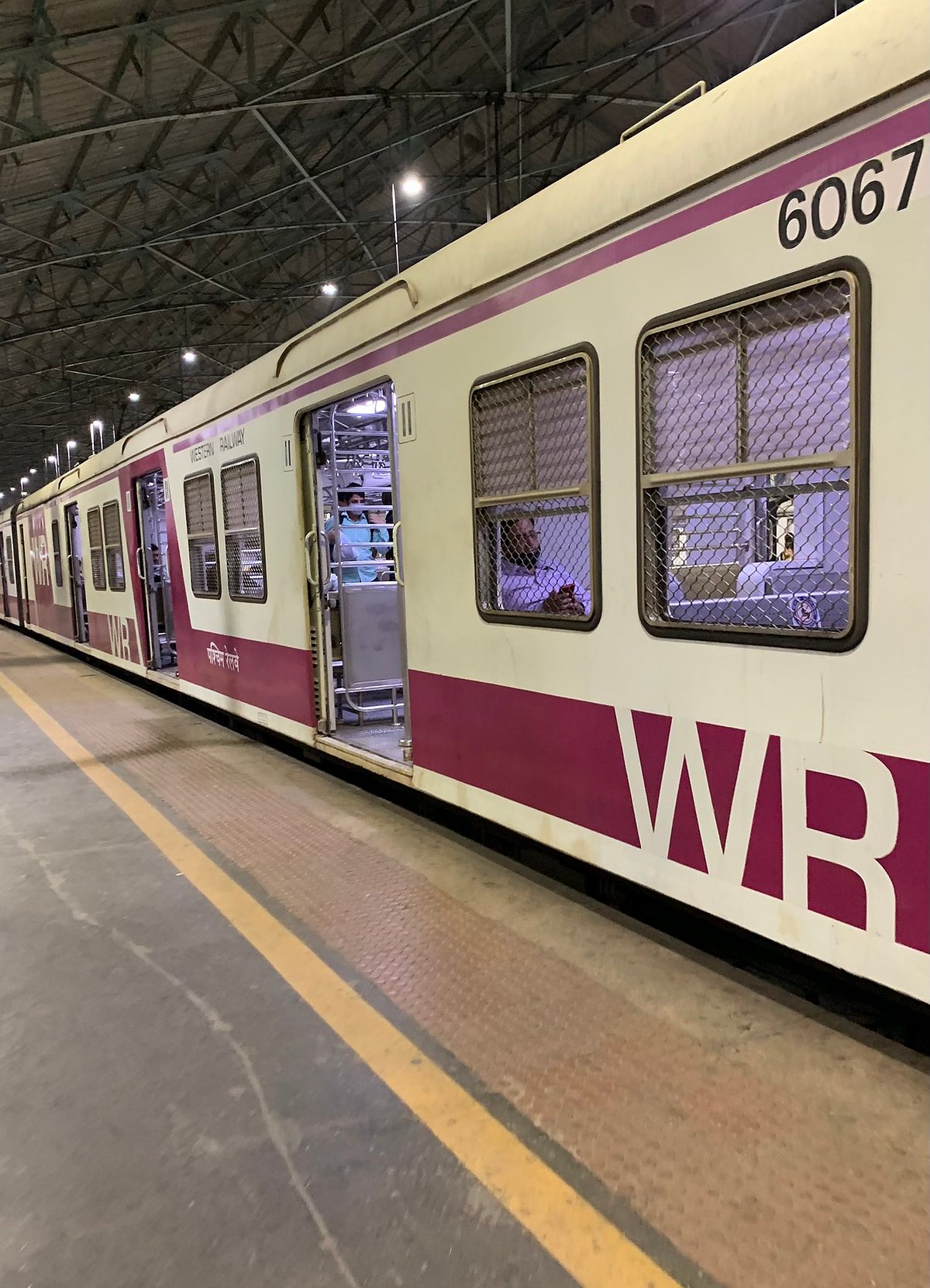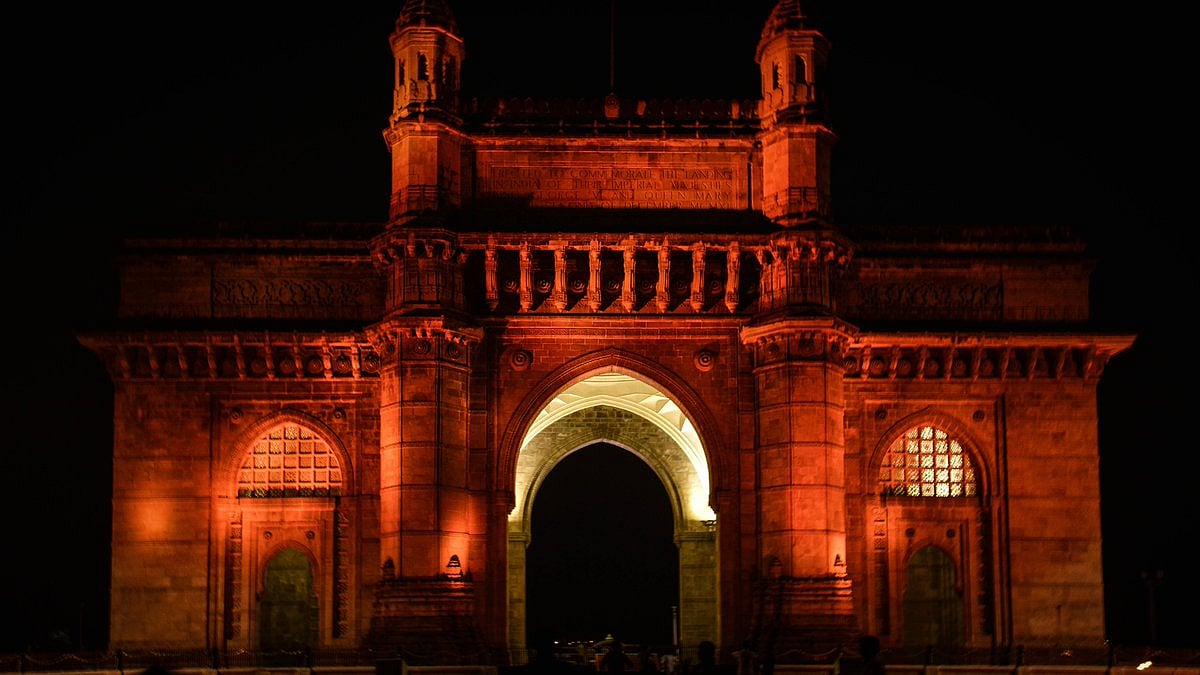Mumbai, beware of the enemy at the gate, writes Vir Sanghvi as National Herald launches its Mumbai edition
Vir Sanghvi, author, columnist and editor, pays tribute to the city but cautions—beware of the enemy at the gate and the assault on its soul—as National Herald launches its Mumbai edition

Writing about Bombay (as it then was) over forty years ago, for the inaugural issue of (the now defunct) Bombay magazine, I compared the city to what was then its most famous gastronomic creation: Bhelpuri.
The thing about bhelpuri is that its individual components are delicious by themselves: the crispy sev, the crunchy mumra, the firm puris and the sweet-sour chutneys. But put them together and the dish that results is much greater than the sum of its parts.
That, I said, was true of Mumbai. It had many parts. But when every community worked together, what resulted was truly special. I said Bombay belonged to no-one. And yet it belonged to all of us. Unlike say, Kolkata which is a Bengali city of Chennai which is a Tamil city, Bombay is impossible to classify.
In that same launch issue of the magazine, actor Dev Anand commented favourably on the cosmopolitan character of Bombay. But he was also worried that overemphasis on its Marathi identity could damage its character.
Even in that more relaxed era, it was a slightly daring thing to say; and a day after the issue hit the stands, Shiv Sena’s Manohar Joshi called us at the magazine.
Had Dev Anand really said that?
We said he had. Joshi sounded upset.
I wanted to make sure Anand had really said it before taking action, he informed us. Look, we said, it is a free country. He has every right to say this. "Exactly," said Joshi. "And I have every right to take a morcha to his house to ask him to withdraw this statement."
This was not good news. On the one hand, any publicity is good for a newly launched magazine. But, on the other hand, I had no desire to see Dev Anand get involved in an unnecessary controversy. Besides, I knew that he did not have a parochial bone in his body. He was not antiMaharashtrian in any way.
I understood what he meant. There is no doubt that the British built Bombay on the site of fishing villages populated by Marathi-speaking people. So yes, Maharashtrians were here long before there even was a city. And the name Mumbai is derived from the goddess they would worship.

But there is no doubt that no single community gave Bombay its character. The old city was built by people from Gujarat; by Parsis who had landed on the Gujarat coast and had moved to Bombay; by Gujarati Muslims from Kutch and Saurashtra: the Bohras, Khojas and Memons who dominated trading. Gujarati Vaniyas came to set up the textile business.
The Gujarat link was so strong that till 1960, the city was the capital of a state called Bombay, which included what are now Gujarat and Maharashtra.
But many other communities helped create the modern city. South Indians flooded Mumbai, finding jobs in offices, in the first half of the 20th Century. After Partition, there was a huge influx of Punjabis, many of whom went on to run the film industry. It cannot be an accident that the holy trinity of stars who dominated the film industry for decades ---- Dev Anand, Dilip Kumar and Raj Kapoor --- all came from families whose roots were on the other side of the border.
Since 1960, when Maharashtra was created, political power was controlled by Maharashtrians. Nobody grudged them that. And the Maharashtra politicians themselves recognized that Bombay was different from the rest of the state. It was certainly a part of Maharashtra but it had its own character as a cosmopolitan mini-India, or as I said, as a bhelpuri-like mixture of the best and the brightest.
I waited anxiously. A few news items also appeared about the impending protest against Dev Anand.
But nothing happened.
Finally, I called Dev Anand. He laughed off the controversy. He had called the Shiv Sena supremo Bal Thackeray, he said. He had explained to him what he meant. Thackeray had understood and told Manohar Joshi to call off the protests.
In a way that incident seemed to me to sum up the Bombay of that era. Yes, there were tensions, there were pulls and pressures. But a reasonable streak ran through the discourse. People were not necessarily bloody-minded.
When the Shiv Sena first demanded that Bombay be renamed Mumbai, I was a little taken aback. I called Bal Thackeray, who was convinced that the renaming would take a long time if it ever did. “But don’t worry,” he said. “You can still call your magazine Bombay.”
It did happen over a decade later and by then I had shifted to Delhi. The finality of the change only sunk in when I found myself interviewing Manohar Joshi --- now, a mellowed national politician --- on a TV show in the capital and referred to Bombay. “Mumbai, please,” he remonstrated. “At least in front of me. I was the Chief Minister who changed the name!” Once again, it was a good-natured exchange.

And yet, when things did change, it was not the Maharashtrians vs The Rest battle that so many people had worried about that transformed Mumbai. It was one we imported from the rest of India which hit at the heart of the city's ethos. And it did the most damage.
It would be untrue to say that there were never any communal tensions. There had always been areas where the communal situation was tense. In the 1980s, riots rocked Bhiwandi, a short distance from Bombay. In the 1990s, there were two waves of rioting in Mumbai following the demolition of the Babri Masjid, during which it was alleged that Mumbai Police did not do enough to protect the minorities. The riots had been followed by serial bomb blasts, conducted by Muslim gang bosses.
But, as unpleasant and painful as all this was, it did not fatally damage the spirit of Mumbai.
When Sharad Pawar, who was the Chief Minister, was informed of the serial bomb blasts, he sensed what the motive was. He added the Muslim locality of Masjid to the list of places where bombs had gone off. This was a white lie but it helped foil the intentions of the bombers who had wanted to provoke riots.
Lives were lost. But lives were saved too. And communal harmony was not badly disrupted.
It was still a city where everyone tried to keep the peace; where people were judged by what they achieved, not by whom they prayed to. People from all corners of India and all faiths worked together without worrying too much about each other’s ethnic and religious origins.
There was no greater symbol of Indian secularism than the film industry. It was where religion had never mattered. Even those who came over from the Lahore film industry after Partition, having left everything behind, having seen riots and massacres, remained free of communal sentiment. The great love stories were often HinduMuslim, even if they were often outside the confines of marriage: Raj Kapoor and Nargis, Dev Anand and Zeenat Aman and Guru Dutt and Waheeda Rehman. In no case was the religious angle considered worthy of much comment.
When the attack on the ethos of Mumbai came, it began with the film industry. And it took the movie business by surprise. The film industry had its share of ups and down in the past. But rarely were they overtly communal in nature. Bal Thackeray, who is sometimes unfairly painted as a Hindu fundamentalist, actually came to the aid of Sanjay Dutt, when he was being attacked for alleged Pakistani sympathies and his anti-Hindu sentiments. (His mother Nargis was a Muslim.)
But when the latest attack came, it was cunningly orchestrated. First social media bots were used to spread hate against individual film personalities. Had Javed Akhtar spoken up for Indian secularism? Well, they would create an anti-Javed trend on Twitter and thousands of semi-literate posts would be directed at him.
Had Aamir Khan said something about the political climate? A social media campaign would be organised, asking the manufacturers of the products he sponsored to drop him from their ads. Hindus would be asked to boycott his films and producers would be urged to think twice before casting him. When this had some effect and stunned the stars into silence, the campaign moved into its next phase. Hatred of Bollywood became an obsession with communal groups. New initiatives were dreamt up.

Had Sushant Singh Rajput committed suicide? Why not say that he was murdered by a cartel of Bollywood moguls and stars?
Attack the film industry non-stop, day and night. Make the moguls sweat. Make the stars cower. The perpetrators kept the film industry on the defensive and let Bollywood know that nobody is safe. Anyone can be targeted at any time.
As this campaign gathered momentum so did another one to paint the whole industry as drug-addled. The Narcotics Control Bureau (NCB), an agency tasked with fighting drug cartels, set about looking for minute quantities of marijuana so that it could interrogate film personalities and raid their homes. As a warning to them, Sushant Singh Rajput’s ex-girlfriend Rhea Chakraborty was sent to jail on drug charges that lacked any credible evidence (as the High Court later pointed out).
When it couldn’t lock up big stars and risk alienating their fans, the NCB started going after the children of these stars and holding them hostage in jails to tell Bollywood how vulnerable it was.
Typically, the courts now take between three weeks to a month to grant bail to anyone who is arrested, even when there is no case, so the NCB and other agencies know they can lock up anyone for weeks.
While all this was going on, a second agenda wrapped itself like a snake around the film industry. It sunk its fangs into one of Bollywood’s most distinctive characteristics: its secular nature. Social media was used to attack Muslims in the industry and a fraudulent nationalism sought to take the place of the film industry’s traditional inclusive patriotism.
The war on Bollywood is part of a larger offensive. It is an initiative launched by people who cannot bear the thought of a cosmopolitan metropolis where religion and ethnicity count for so little and where achievement and performance are all that matter. It is, if you are going to be honest, an attack on the soul of a city, on the very spirit of Mumbai. It seeks to destroy everything that makes Mumbai special and to turn it into a seething cesspool of hate, prejudice and fear that someone like Yogi Adityanath would be happy to rule.
Will it succeed? Will the laal chutney in the bhelpuri that represents this great city be turned into blood?
My first instinct is to say: never, this cannot happen in the Mumbai I know. But stranger things are happening in the India that we thought we knew.
So let’s fight to keep the Mumbai we love. This is one of the world’s great cities. Do not let it be drowned in hatred, shrouded in fear and pillaged by the barbarians at its gate.
Also Read: Mumbai: The city of masks and marshals
Follow us on: Facebook, Twitter, Google News, Instagram
Join our official telegram channel (@nationalherald) and stay updated with the latest headlines
Published: 14 Nov 2021, 12:10 PM
